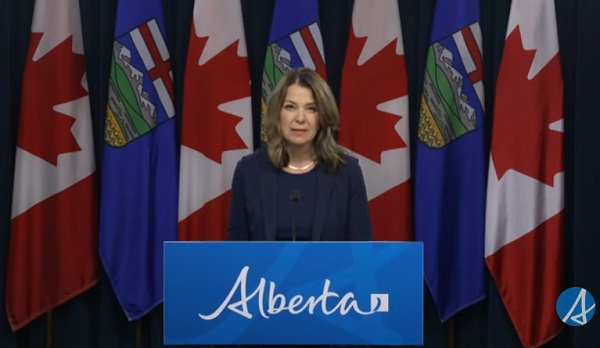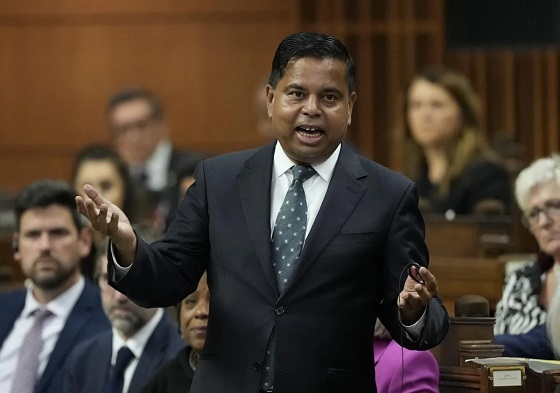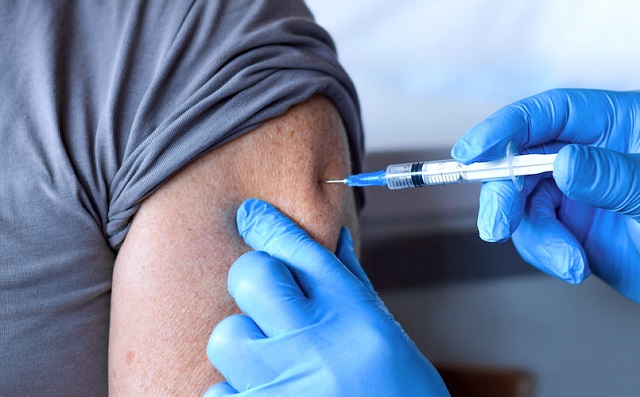Business
Every Federal Regulator Destroys 138 Jobs

From the Brownstone Institute
By
This lost output is made of jobs and businesses that were never started. Or were stunted by strangling regulations — mom and pops chased into bankruptcy as collateral damage to new regulations — say, a diner forced to spend $30,000 on a low-energy exhaust fan.
An Auburn University study says every single regulator destroys fully 138 private sector jobs every year you keep him on the job.
With nearly 300,000 federal regulators, the shock is that we still have any jobs at all.
The Two Scariest Words in the English Language
A lot of the excitement around the Department of Government Efficiency — DOGE — focuses on the dollars saved. But more important is all the things the federal government destroys with those dollars.
Specifically, the millions of jobs destroyed by the two scariest words in the English language: federal regulators.
A few weeks ago I mentioned how DOGE under Elon and Vivek is taking aim at the regulatory mothership that strangles the American economy and fuels the totalitarian administrative state — you may remember it from Covid.
A mother ship that is oddly enough unconstitutional according to a pair of recent Supreme Court decisions — Loper Bright Enterprises v Raimondo and West Virginia v EPA.
I asserted this could unleash the economy like nothing we’ve seen in the past century.
And the reason is because it’s hard to overstate just how destructive regulations are.
Every Regulator Destroys 138 Jobs
One 2017 study by the Phoenix Center and Auburn University found that every single full-time regulator destroys 138 jobs.
GDP-adjusted to today, that translates to $16.5 million of economic output. For a hundred-thousand dollar bureaucrat.
This lost output is made of jobs and businesses that were never started. Or were stunted by strangling regulations — which are generally bought by big corporations specifically to strangle small competitors.
Along with mom and pops chased into bankruptcy as collateral damage to new regulations — say, a diner forced to spend $30,000 on a low-energy exhaust fan.

So it’s not the bureaucrat’s hundred thousand salary that matters. It’s the 138 jobs he takes out. Every single year you keep him around.
In fact, you could fire him, keep paying him for life, and still put a hundred families in the middle class.
In recent videos I’ve mentioned research saying one dollar in taxes destroys 3 dollars in GDP. A regulator blows that out of the water — each dollar in regulator salary destory 112 dollars in output.
Given there’s roughly 288,000 full-time federal employees involved in regulatory activities, that implies an annual cost of regulation of around $5 trillion. One-fifth of our entire economy.
This means DOGE slashing tens of thousands of regulations could spark Morning in America even if we keep every last one of them on the payroll.
The Top 3 Regulatory Offenders
The worst 3 regulatory offenders are the EPA, which prey especially on small businesses least able to afford their never-ending mandates.
Second is securities mandates — namely Dodd-Frank and Sarbanes-Oxley — that have all but closed public markets to start-ups and shelter banks and insurers from competition.

And labor regulations — namely FLRA, NLRB, an alphabet soup including Obamacare mandates and occupational licensing. There are brutal for small businesses that might take a gamble on marginal workers but are locked in.
And they raise the cost of hiring to the point that companies downsize or move to China to survive.

Of course, these are just the start. The regulatory code has grown like a monster for a hundred years in literally every domain you can imagine, from braiding hair to collecting rainwater on your property to giving health advice — which is illegal unless you’re a doctor.
And, my personal favorite, the regulatory mandate to literally add poison — ethanol — to any alcohol that’s not taxed, including mouthwash. In case you thought the federal government would never poison you on purpose.
What’s Next
Deregulation is central to Trumponomics — low inflation and fast growth.
Because the best way to do both is to reduce the federal burden — the spending, sure, but above all the forest of regulations strangling our economy. Even if DOGE doesn’t manage to save a penny, gutting the regulatory state will pay us back 138-fold.
Republished from the author’s Substack
Business
Carney government risks fiscal crisis of its own making

From the Fraser Institute
By Jake Fuss and Grady Munro
In his recent pre-budget speech in Ottawa, Prime Minister Mark Carney repeated his pledge to make “generational investments” in his government’s first budget on Nov. 4. Of course, “investments” means spending, and the government is poised to run a large deficit and add to the mountain of federal debt. Also in his speech, the prime minister said he “will always be straight about the challenges we have to face and the choices that we must make.” Yet he makes no mention of the risks associated with continued deficit-spending and a ballooning federal debt.
Meanwhile, according to a recent article co-authored by Kevin Page, former Parliamentary Budget Officer (PBO), the Carney government should continue to run budget deficits to benefit “current and future generations” of Canadians. And Page (and co-authors) push back against warnings from the current PBO that the government’s finances are unsustainable—noting that “there is no fiscal crisis.”
And he’s right. Canada does not currently face a fiscal crisis. But the Carney government seems determined to create one.
First, some quick fiscal history. The federal government has run a deficit (i.e. spent more money than it collects in revenue) every year since 2007/08, spanning both Conservative and Liberal governments, meaning it’s been nearly two decades since the government balanced its budget. And over the last 10 years (i.e. the Trudeau era) there’s been no meaningful effort to work towards budget balance.
Of course, deficits produce debt. From 2014/15 to 2024/25, total federal debt has doubled from $1.1 trillion to a projected $2.2 trillion, and as a share of the economy, increased from 53.0 per cent to a projected 70.0 per cent.
Simply put, when government debt grows faster than the economy, government finances are on an unsustainable path that may lead to a fiscal crisis. The last time Canada faced a fiscal crisis was the early 1990s when total federal debt represented more than 80 per cent of the economy and the federal government spent roughly one in every three dollars of revenue collected each year on debt interest. In response to Ottawa’s inability to control its finances, lenders increased interest rates because lending money to Ottawa became a riskier proposition. Things became so dire that the Wall Street Journal penned an editorial arguing Canada had become “an honorary member of the Third World in the unmanageability of its debt problem.”
While Ottawa’s finances today aren’t as precarious as they were back then, a decade of record-breaking spending and debt accumulation has brought us closer to a fiscal crisis.
The Carney government faces significant challenges including the spectre of more U.S. tariffs, a stagnant economy and the need to significantly ramp up Canada’s military spending. Again, despite promising a “very different approach” to fiscal policy than the previous government, the prime minister’s recent speech reinforced expectations that the government will significantly increase spending and borrowing this year and in years to come. Indeed, the PBO recently projected that total government debt will rise to 79.2 per cent of the economy by 2028/29.
When defending this status quo approach, the government and its defenders essentially argue that we can keep running larger deficits because Ottawa’s finances are not in bad shape compared to the past or compared to other developed countries (which is actually not true), and that Canada enjoys a strong credit rating that helps keep borrowing costs down.
But in reality, they also effectively argue that we should continue down a path to a fiscal crisis simply because we haven’t reached the end yet. This is reckless, to say the least. The closer we get to a fiscal crisis the harder (and costlier to Canadians) it will be to avoid it.
To get Ottawa’s finances back in order before it’s too late, the government should reduce spending, shrink the deficit and slow the amount of debt accumulation. Unfortunately, the Carney government appears to be running in the opposite direction.
Business
Trump Admin Establishing Council To Make Buildings Beautiful Again


From the Daily Caller News Foundation
The Trump administration is creating a first-of-its-kind task force aimed at ushering in a new “Golden Age” of beautiful infrastructure across the U.S.
The Department of Transportation (DOT) will announce the establishment of the Beautifying Transportation Infrastructure Council (BTIC) on Thursday, the Daily Caller News Foundation exclusively learned. The BTIC seeks to advise Transportation Secretary Sean Duffy on design and policy ideas for key infrastructure projects, including highways, bridges and transit hubs.
“What happened to our country’s proud tradition of building great, big, beautiful things?” Duffy said in a statement shared with the DCNF. “It’s time the design for America’s latest infrastructure projects reflects our nation’s strength, pride, and promise.”
“We’re engaging the best and brightest minds in architectural design and engineering to make beautiful structures that move you and bring about a new Golden Age of Transportation,” Duffy continued.
Mini scoop – here is the DOT’s rollout of its Beautifying Transportation Infrastructure Council, which will be tasked with making our buildings beautiful again. pic.twitter.com/9iV2xSxdJM
— Jason Hopkins (@jasonhopkinsdc) October 23, 2025
The DOT is encouraging nominations of the country’s best architects, urban planners, artists and others to serve on the council, according to the department. While ensuring that efficiency and safety remain a top priority, the BTIC will provide guidance on projects that “enhance” public areas and develop aesthetic performance metrics.
The new council aligns with an executive order signed by President Donald Trump in August 2025 regarding infrastructure. The “Making Federal Architecture Beautiful Again” order calls for federal public buildings in the country to “respect regional architectural heritage” and aims to prevent federal construction projects from using modernist and brutalist architecture styles, instead returning to a classical style.
“The Founders, in line with great societies before them, attached great importance to Federal civic architecture,” Trump’s order stated. “They wanted America’s public buildings to inspire the American people and encourage civic virtue.”
“President George Washington and Secretary of State Thomas Jefferson consciously modeled the most important buildings in Washington, D.C., on the classical architecture of ancient Athens and Rome,” the order continued. “Because of their proven ability to meet these requirements, classical and traditional architecture are preferred modes of architectural design.”
The DOT invested millions in major infrastructure projects since Trump’s return to the White House. Duffy announced in August a $43 million transformation initiative of the New York Penn Station in New York City and in September unveiledmajor progress in the rehabilitation and modernization of Washington Union Station in Washington, D.C.
The BTIC will comprise up to 11 members who will serve two-year terms, with the chance to be reappointed, according to the DOT. The task force will meet biannually. The deadline for nominations will end Nov. 21.
-

 Agriculture2 days ago
Agriculture2 days agoFrom Underdog to Top Broodmare
-

 Health2 days ago
Health2 days agoSovereignty at Stake: Why Parliament Must Review Treaties Before They’re Signed
-

 Business2 days ago
Business2 days ago$15B and No Guarantees? Stellantis Deal explained by former Conservative Shadow Minister of Innovation, Science and Technology
-

 Alberta2 days ago
Alberta2 days agoPremier Smith moves to protect Alberta in International Agreements
-

 Uncategorized10 hours ago
Uncategorized10 hours agoTrump Admin Establishing Council To Make Buildings Beautiful Again
-

 DEI1 day ago
DEI1 day agoConservative push to end Canada’s ‘anti-merit’ DEI programs receives support
-

 Business1 day ago
Business1 day agoLiberals backtrack on bill banning large cash gifts, allowing police to search Canadians’ mail
-

 Health1 day ago
Health1 day agoFor Anyone Planning on Getting or Mandating Others to Get an Influenza Vaccine (Flu Shot)










